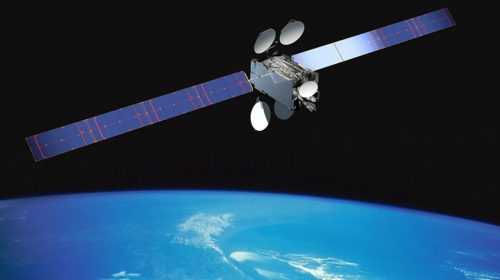Deploying Four MicroGEO Satellites in One Launch
Dec 21, 2024
Four Astranis satellites have been delivered to Cape Canaveral Space Force Station, awaiting their Falcon 9 launch from pad 40, which is scheduled for 12 a.m. EST (0500 UTC) on December 22. These satellites form part of a four MicroGEO satellite mission, the purpose of which is to cater to different customer needs. Anuvu has been allocated two of these satellites, dubbed NuView Alpha and NuView Bravo, to service its in-flight connectivity services.
 Astranis sends four MicroGEO satellites to Cape Canaveral for a Falcon 9 launch. Credit: Astranis
Astranis sends four MicroGEO satellites to Cape Canaveral for a Falcon 9 launch. Credit: Astranis
These satellites will be the first dedicated satellites used by Anuvu, and the company will be using satellites rather than leasing satellite capacity, which will be a first for the company. Anuvu CEO Josh Marks said the company’s goal was to grow its connectivity network in a way that would be both scalable and agile for its mobility customers. Astranis’s MicroGEO satellites would also give Anuvu’s customers the freedom from decades long contracts and out of date legacy systems, he added. Marks said the satellites’ quick market deployment, seven to ten year mission life, as well as their ground based control and update capabilities, would enable their mobility clients to adjust their business models as new technology comes to market.
The third satellite, called AGILA, is noteworthy because it is the Philippines’ first dedicated communications satellite. The development is a key partnership with regional satellite service provider Orbits Corp, which has already committed to building a second satellite for the Philippine market, showing strong confidence in the region’s growing telecommunications needs. Astranis’s commitment to multi-purpose functionality is demonstrated by the fourth satellite, dubbed UtilitySat. UtilitySat is designed to support multiple customers during its operational lifetime, though specific additional customers are not announced, and is also ordered by Mexico’s APCO Networks, which has already ordered two more Astranis satellites.
That launch will come after Astranis has experienced problems with its first MicroGEO satellite launched in April 2023 along with ViaSat-3. The vendor-supplied solar arrays on the inaugural satellite encountered problems that prevented the satellite from fulfilling its stated mission of providing broadband connectivity to Alaska. The current launch’s success has received heightened attention because of this setback. John Gedmark, CEO Astranis, pointed out the unprecedented nature of this mission and the fact that it marks the company’s first foray into managing multiple satellites at the same time. Launching four satellites at the same time represents a historic first in the industry, he said, noting that the satellites also include the most advanced technology to date, which will improve capacity and lower costs for their customers.
These four satellites represent the technical improvements Astranis has implemented to show its commitment to innovation. Upgrades to the MicroGEO model include a new in house developed gimbal for the electric propulsion thruster, a deployable main reflector to increase satellite throughput, and additional redundancy features in the company’s software defined radio system. If successful, the mission will be the first time that a single satellite manufacturer has placed four of its own satellites into geostationary orbit (GEO) on a single launch vehicle. It’s particularly notable, especially considering that Astranis satellites are orders of magnitude smaller than typical GEO satellites, which indicates that the company has been able to minimize launch and deployment costs.





